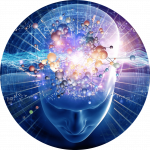Misophonia is a condition where certain sounds, noises or behaviours can trigger extremely strong, even overpowering, negative feelings and emotions that are hard to control.
Anxiety and Misophonia are distinct conditions but there are links between them and both conditions can affect anyone. However, research indicates it’s more common in female and is most likely to develop in the early teens. Misophonia isn’t dangerous or life threatening, but it is unpredictable and can negatively affect mental health. Symptoms ca be managed and hypnosis can help to keep reactions and emotional responses under control.
Research also suggests that Misophonia can be a lifelong condition. It doesn’t have offici recognition as a distinct disorder but it is acknowledged as a formal consensus definitio for research purposes and for diagnosis and treatment. It is recognised by healthcare providers who understand how it can affect suffere
Misophonia can affect people in different ways. Some people may have just ‘trigger’ sound that causes this reaction while others may have several. Some reactions can be severe. Some people find it extremely difficult to control the emotional resp they feel, but most people can control their responses. Others experience impulsive reactions and in the most severe cases, sufferers may not be able to do certain tasks or b in specific environments. They may feel fearful or anxious about the possibility of hearin trigger sounds and these feelings can sometimes be strong enough to affect routin activities.
Behavioural reactions can occur in response to trigger sounds and are usually impulse or instinct driven and a sufferer might not always be able to exercise full control over the
Emotional feelings can be intense and overwhelming. There can be a rapid escalation of these feelings — mild irritation can easily turn into anger or even rage.
Physical feelings are self-protective processes that kick in automatically, similar to those that happen in threatening fight-or-flight situatio
Body reactions can include increase in blood pressure, chest pressure or tightness, goosebumps, increases in heart rate, sweating…
Violent emotional driven reactions, toward people or objects, are rare, but they would include anger, anxiety, disgust, fear, irritation…
Avoidance reactions include avoiding situations where trigger sounds might happen, leaving the area when a trigger sound happens, verbal or vocal reactions such as talking or yelling at who or what made the sound, non-violent action to stop the sound, and rarely, violent action to stop the sound.
He severity of symptoms can also vary. When symptoms are less severe, emotional and bodily reactions may be all one may experience, but if symptoms are more severe, the effects may be so strong as to also cause a behavioural reaction. In very severe cases, sufferer may react so strongly — either with words or actions — that they don’t have tim
to think before behaving in a way that could be upsetting to others. In those situations, it’s common for the person with Misophonia to regret their actions afterwards, but still struggle to control themselves in the future.
Different people are triggered by different sounds. Some sounds may be more likely trigger than others. The sound of the wind or rain can be triggers, but these natural sounds are rare. Sounds made by humans are much more likely to trigger a reaction. Examples include eating and drinking noises, smacking lips, chewing with mouth open, loud swallowing, crunching or gulping, breathing noises including snoring, sniffing, nose blowing, heavy breathing, etc. Even noises made by tapping fingers or toes, clicking a tapping rhythms in time to music, etc can be triggers, as can throat clearing, coughing, humming, clicking, etc.
All the kinds of noises and sounds above are made by humans and are selfish and ofte downright rude, so sufferers are quite reasonably going to get frustrated and annoyed a others people’s lack of manners.
No one knows exactly what causes Misophonia but research has shown that differences in brain structure or brain activity, a family history of certain behaviours, or eve genetics may be responsible. It may be that some people just prefer peace and quiet rather than the ill-mannered noises of others!
Another cause could be more connections or activity in or between certain areas of the brain that control the processing of sounds and related emotions. Hearing and emotions are part of the brain’s built-in self-protection system anyway. Think of our distant ancestors guarding their caves in the dead of night and this might explain why we learn to associate certain kinds of noise with emotions like fear, anger and disgust with threatening situations.
Misophonia is like suddenly turning on a radio only to find it was left on at maximu volume. We learn to react to sudden noises that makes us react instinctively to make the noise stop. People with Misophonia are likely more sensitive to the kind of sounds which lead to emotional and behavioural reactions. There is evidence that suggests Misophonia might be a condition that runs in families.
Other conditions and other brain disorders which may contribute to Misophonia include Attention-Deficit/Hyperactivity Disorder (ADHD), Autism Spectrum Disorder Tourettes syndrome or Borderline Personality Disorder (BPD).
There are similarities and links between Misophonia and other conditions, such as OCD or PTSD, indicate that people with Misophonia may benefit from various forms o mental health therapy, psychotherapy or hypnotherapy.
Misophonia may not be an officially recognised condition, but that doesn’t mean i effects can’t be treated. Psychotherapy can help identify triggers, and suggest ways t minimise or prevent triggers. Hypnosis can help can help to develop coping strategies and techniques to avoid impulsive reactions to triggers and reduce sensitivity to existing triggers.
The same treatments employed for anxiety and OCD may also help with Misophonia, as can hypnotherapy. Sufferers can adapt to, or manage the condition using technolog such as noise-canceling headphones. Listening to music or an audio book to keep the brain’s hearing-related processes focused on anything other than listening for a trigger sound may also help.

